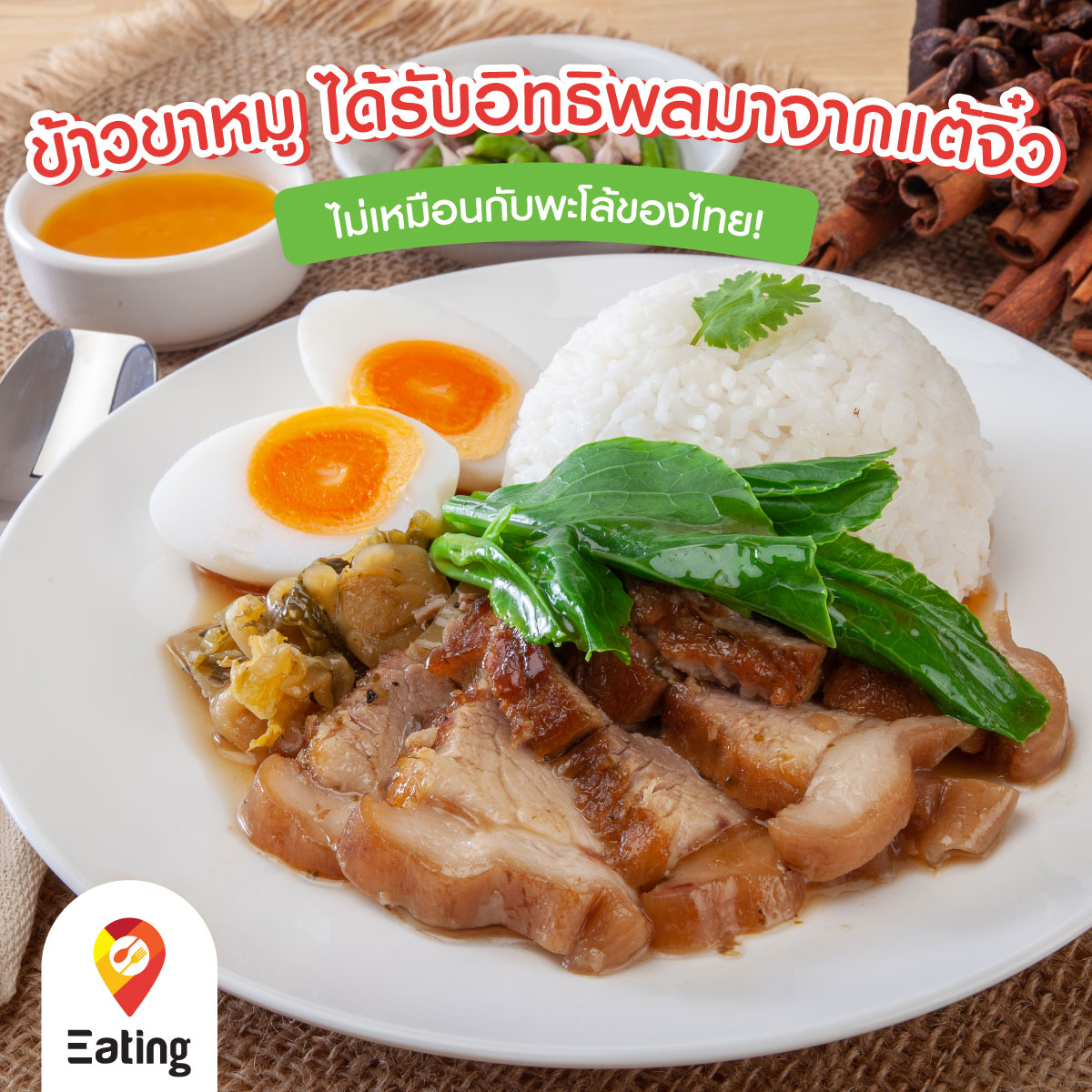Insider
New Experience

ข้าวขาหมูได้รับอิทธิพลมาจากแต้จิ๋ว
ไม่เหมือนกับพะโล้ของไทย!
ข้าวขาหมูเนี่ยเหมือนจะกลายเป็นอาหารจานเดียวที่เรียกได้ว่าเป็นส่วนนึงในชีวิตประจำวันของคนไทยไปแล้วใช่ไหม เพราะว่าใคร ๆ ก็กินข้าวขาหมู
.
ข้าวขาหมู ที่เรา ๆ เห็นกันทุกวันนี้ได้อิทธิพลมาจากชาวแต้จิ๋วฮะ มาจากเมนูพื้นบ้านของอำเภอล้งกั่ง 隆江 เมืองหุ้ยไล้ 惠来(เป็นส่วนนึงของเก๊กเอี๊ย) มณฑลกวางตุ้ง คิดว่าเดาไม่อยากหรอกเนอะ เพราะชาวแต้จิ๋วเป็น 1 ใน 3 ของเจ้าตำรับงานพะโล้ฮะ พะโล้แต้จิ๋วถือเป็นหนึ่งในตองอู
.
ซึ่งข้าวขาหมูจริง ๆ ก็ไม่เชิงว่าเป็นพะโล้ซะทีเดียวฮะ การใส่เครื่องเทศและน้ำต้มสีดำ ๆ ไม่ได้เป็นพะโล้เสมอไป แต่คนไทยมักจะเรียกรวมกันว่าพะโล้
.
ปัจจุบันข้าวขาหมูในไทยมีความหลากหลายมาก ทั้งมีแบบใส่ผงโอวัลตินเพิ่มความเข้มข้นบ้าง ใส่เครื่องเทศเฉพาะตัวบางอย่าง ไม่ใส่ทิโป้ว แล้วแต่สูตรที่ผันเปลี่ยนไปตามกาลเวลาและสถานที่ ก็ถือว่ากลายเป็นเมนูใหม่ในอีกสไตล์
----------------------------------------------
It seems like Khao Kha Moo (braised pork leg with rice) has become a staple dish in the daily lives of Thai people, hasn't it? Almost everyone enjoys Khao Kha Moo.
.
KhaoKhaMoo that we see today has its roots in Teochew cuisine, specifically from a local dish in Longgang 隆江 District, Huilai 惠来 City (part of Jieyang), Guangdong Province. It’s not hard to guess since the Teochew people are one of the three main originators of the "Pa-lo" style cooking. Teochew-style Pa-lo is considered one of the best.
.
However, Khao Kha Moo isn’t exactly Pa-lo. Just because it contains spices and is cooked in a dark broth doesn’t necessarily mean it’s Pa-lo, though Thais often categorize it as such.
.
Nowadays, Khao Kha Moo in Thailand has evolved with a wide variety of versions. Some add Ovaltine powder for extra richness, some use unique spices, while others skip certain traditional ingredients like "Ti Pow." The recipe has changed over time and across regions, creating a new style of this beloved dish.
ขอขอบคุณข้อมูลจาก ลูกคนจีน